5 Easy DIY Trellises for Climbing Houseplants
I love watching my houseplants stretch and climb, but let’s be honest—they sometimes need a little help. A good trellis keeps my plants upright and adds a nice touch to my space.
With just a few easy-to-find materials, I can whip up trellises that actually fit my style and the room. That way, my climbing plants get a boost to grow strong and stay healthy.
Please note: Simplify Plants is reader-supported. As an Amazon Associate, I earn from qualifying purchases made by our readers with no extra cost added to you all! Some links in the post are affiliate links and I get a commission from purchases made through links in the post.
1) Bamboo Stakes and Twine Frame
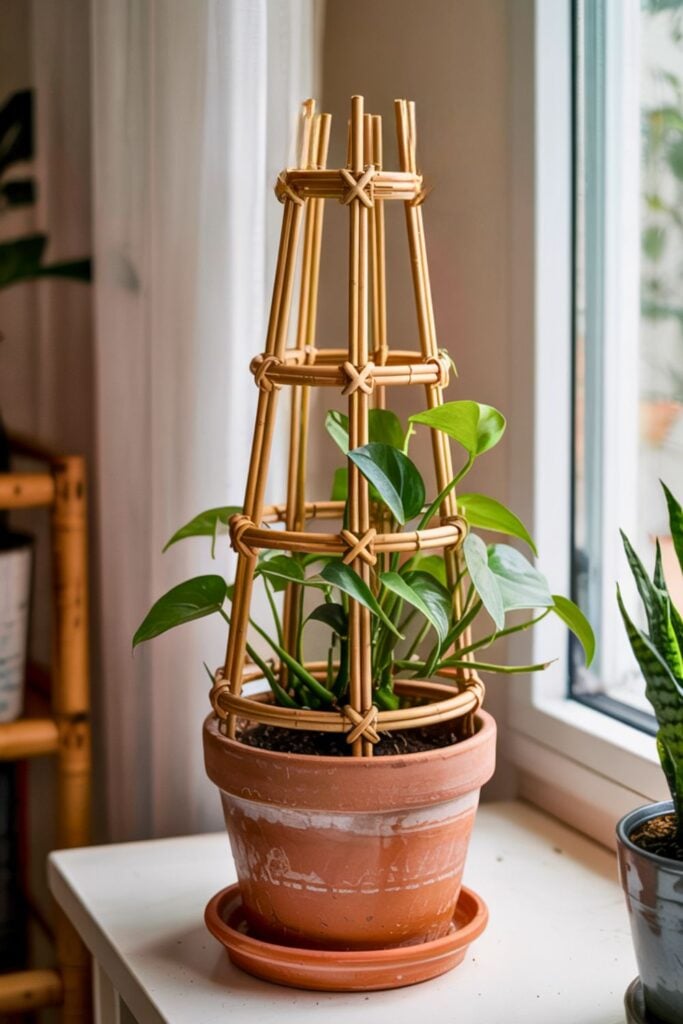
I enjoy making a simple trellis out of bamboo stakes and twine for my climbing houseplants. These supplies are cheap and easy to grab at most stores.
First, I grab three or four straight bamboo stakes, depending on my pot size. I push them deep into the soil, aiming for the corners to form a triangle or square.
Then I use some strong twine to tie the tops of the stakes together. I crisscross more twine between the stakes, making a sort of net or ladder shape.
If my plant needs extra support, I’ll add more twine at different heights. The more spots for vines to grab, the better.
I like that I can make this frame tiny or tall, and it always seems to blend into the background. Bamboo is surprisingly sturdy, yet light, and the twine is gentle on stems.
I stick to natural, uncoated twine so nothing weird touches my plants. Honestly, this whole project takes just a few minutes.
If my plant gets too big, I just move or tweak the frame. My houseplants always seem to climb straighter when I use this setup, and it keeps the leaves off the dirt.
I think this is perfect for beginners. I use it with pothos, philodendron, and hoya all the time.
2) PVC Pipe Grid Trellis
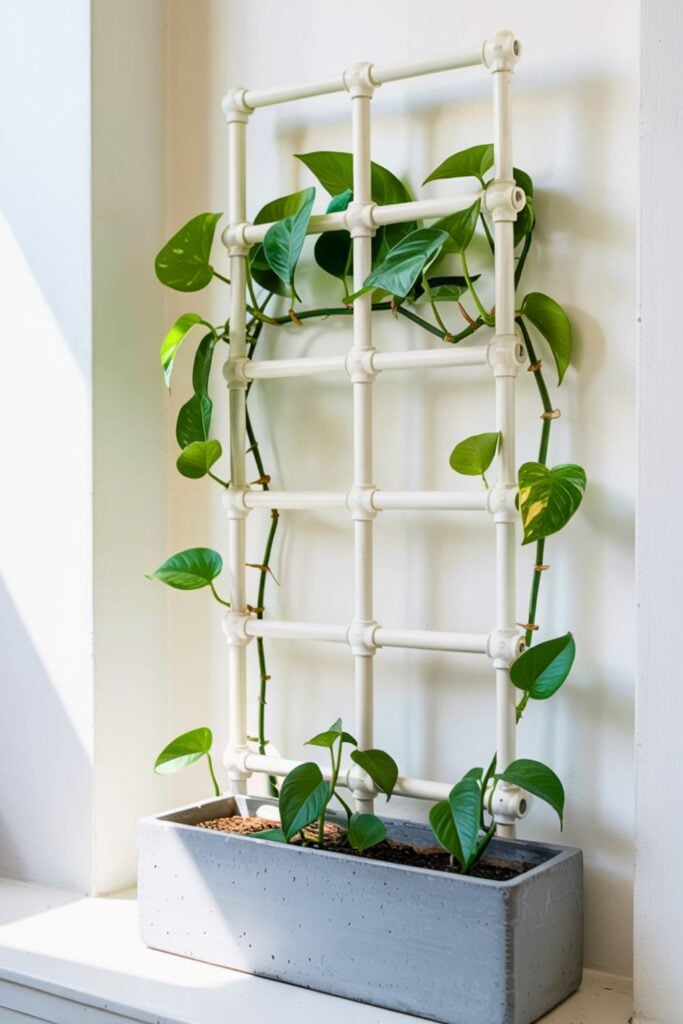
PVC pipes are one of my favorite materials for trellises. They’re light, easy to work with, and super affordable. Making a PVC grid is a breeze once you have the parts.
I grab thin PVC pipes, elbow connectors, and a little hacksaw. After measuring, I cut the pipes to fit my space, then snap them together with the connectors to make a square or rectangle grid.
I set the grid behind my climbing plants. The plastic is strong enough for most vines, and since PVC is water-resistant, I don’t have to stress about water damage.
The finished grid is pretty clean-looking. Sometimes I spray-paint it to match my planters or just for fun. It really pulls my plant corner together.
With the grid in place, I gently guide the vines onto it. All those open squares give plenty of spots to cling to, and if I need to rearrange, the whole thing comes down easily.
PVC pipe trellises are a smart, simple way to let climbing plants shoot up and thrive. Plus, it’s easy to make more as my collection grows (and it always does).
3) Wooden Ladder Trellis
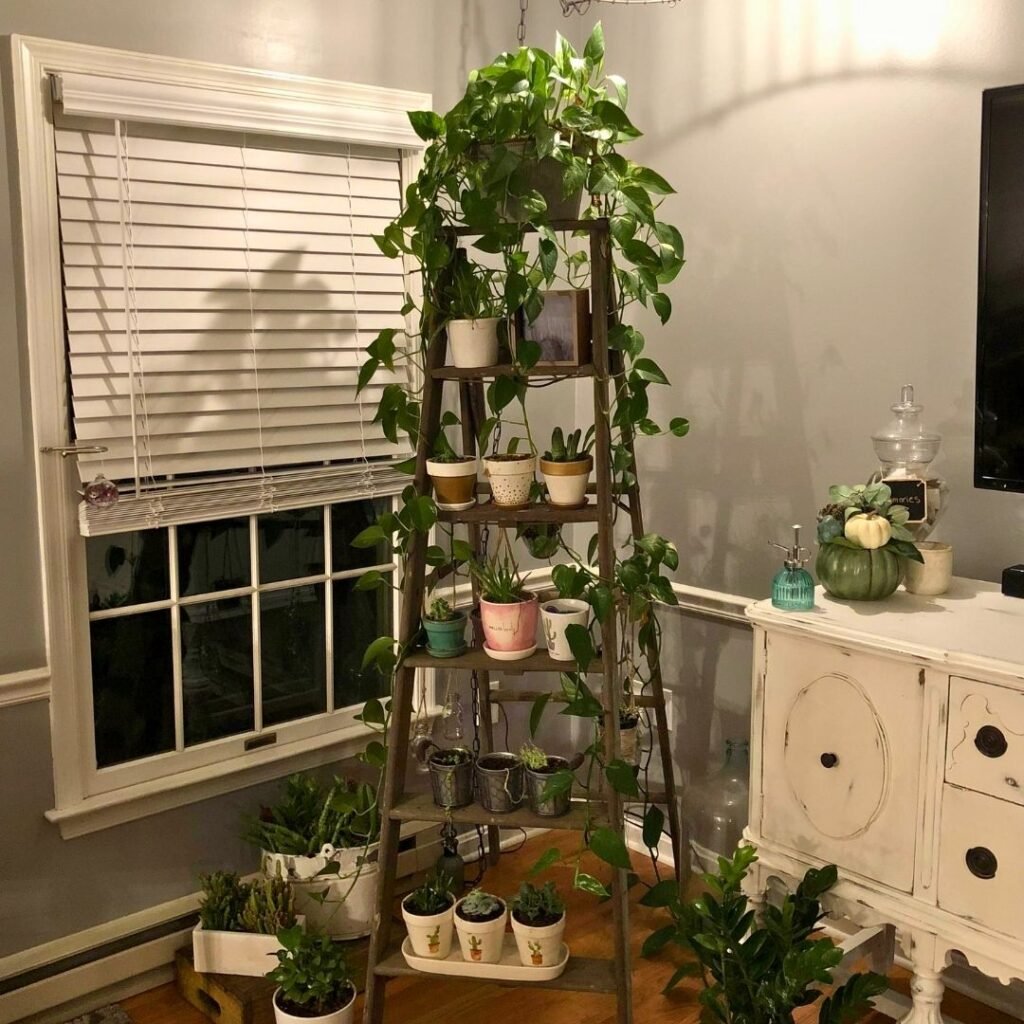
A wooden ladder trellis is such a classic. I like it because it’s easy to make and looks good pretty much anywhere.
To get started, I grab two skinny wood dowels for the sides and cut a few shorter pieces for rungs. I lay them out like a ladder and attach the rungs with wood glue or tiny nails. Then, I let the glue dry.
I usually stick the ladder right in the plant pot or lean it against the wall behind my plant. The spaces between rungs are perfect for vines to weave and climb.
Sometimes I paint the wood for a pop of color, or just leave it natural for a rustic vibe. If I want it to last, I’ll brush on some clear sealant.
This trellis gives my plants a boost as they reach up. I think it’s perfect for pothos, philodendrons, and ivy. It’s quick, easy, and always makes my plants look a bit happier.
4) Wire Mesh Panel
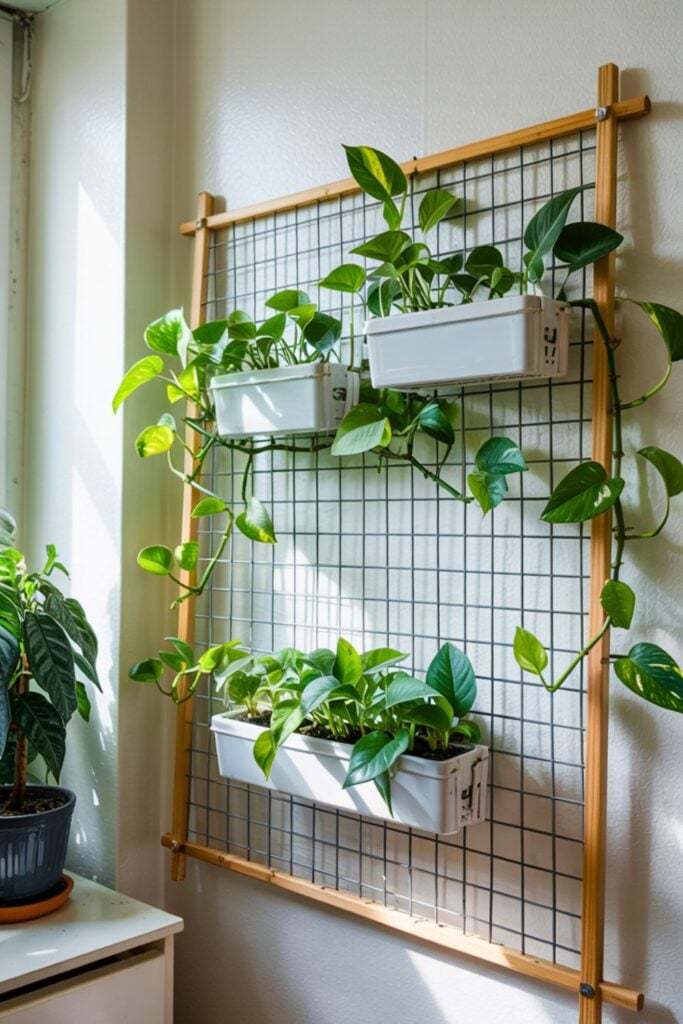
I’m a big fan of the wire mesh panel trellis. It’s sturdy, simple, and works for all sorts of climbing plants. Plus, wire mesh is cheap and easy to find at any hardware store.
I cut the mesh down to size with wire cutters (and gloves—those edges can be sharp). If I’m feeling creative, I’ll spray-paint the mesh to match my pots or decor.
I either stand the panel behind my plant or push it right into the soil. The thin wires are perfect for vines to grab as they grow. Wire mesh is strong enough to support heavier plants like monstera or pothos.
If it needs extra support, I’ll use a couple of wooden sticks or chopsticks in the soil and secure the mesh with twist ties. That way, it doesn’t wobble.
What I love most? Wire mesh panels are super customizable. I can bend or trim them to fit any pot, and they fit into tight spots—ideal for small apartments.
Sometimes I’ll add little hooks to guide vines or hang tiny decorations. It’s a fun way to show off my plants and get a little crafty.
Wire mesh panels last ages with just a quick wipe now and then. My plants always seem to love the extra climbing space.
5) Macrame Plant Hanger Trellis

A macrame plant hanger as a trellis? Yes, please. It’s stylish and gives my plants all sorts of spots to climb, especially in small spaces or apartments.
I usually go for soft cotton rope since it’s gentle on stems and easy to tie. I make simple knots and loops to create a net that vines can grip as they grow upward.
Hanging it is simple. I hook it to the ceiling or a sturdy bracket by a sunny window. Sometimes I’ll add beads or colored rope for a bit of flair. The open design means plenty of light reaches the whole plant.
Macrame hangers are easy to take down and clean. When watering, I’m careful not to soak the ropes—wet rope can get moldy if I’m not careful.
This trellis lets me show off my crafty side and helps my plants reach new heights. I can make it any size I want, depending on my space.
A macrame trellis is a creative, fun option for anyone who wants both style and function for their plants.
Benefits of Using Trellises for Indoor Climbing Plants
Adding a trellis to my houseplants helps them grow stronger and keeps things looking neat. Plus, I can fit way more plants inside without hogging all the floor space.
Encouraging Healthy Growth
A trellis gives my climbing plants the support they need to climb up instead of sprawling everywhere. Plants like pothos, monsteras, and philodendrons shoot upward instead of trailing messily along shelves.
Trellises keep leaves and stems separate, so air and light reach every part of the plant. Good airflow means less mold or rot. Healthier leaves just look better, honestly.
Sometimes my climbing plants get heavy and start to sag. With a trellis, I don’t worry about broken stems or sad, droopy vines. The plant can focus on new leaves and roots instead of just trying to stay upright.
Quick Benefits List:
- Better light exposure
- Improved airflow
- Stronger stems and roots
Maximizing Vertical Space
I don’t have a lot of room, so vertical space is key. Trellises let me grow plants up instead of out, saving every inch.
Instead of spreading all over, my plants climb up a wall or into empty air. It keeps the place from feeling cluttered and leaves space for more plants (or anything else I want).
I can pick all sorts of trellis shapes—ladders, grids, hoops—whatever suits my vibe. It makes my plant area look organized, and sometimes it’s a cool accent in the room.
A trellis is a simple way to pack more greenery into a small spot. Blank walls or awkward corners suddenly become little jungles.
Tips for Choosing the Right Materials
When I make a trellis, I want it to look good, work well, and be safe for my plants. That’s not too much to ask, right?
Balancing Function and Style
I always try to pick materials that match my plant’s needs and my own taste. Some plants do best with smooth, strong support like wooden dowels or coated wire. For a modern look, I’ll sometimes use copper pipes or metal rods.
Here are some solid options:
| Material | Benefits | Looks Best With |
|---|---|---|
| Bamboo | Lightweight, natural look | Vine plants, tropical styles |
| Wooden Dowel | Sturdy, easy to cut/paint | Most houseplants |
| Metal Rod | Very durable, modern vibe | Sleek or industrial decor |
| Coated Wire | Flexible, easy to bend | Small and delicate vines |
If I want more color, I’ll go with painted wood or colored cord. Neutrals keep it classic, but sometimes I just want something bold. I always match the trellis to the plant and the room.
Ensuring Stability and Safety
The material needs to be strong enough for whatever plant I’m supporting. I avoid flimsy sticks or cheap plastic—they just don’t cut it. I stick to dowels at least ¼ inch thick or sturdy metal rods.
When I put the trellis in the pot, I make sure it’s stable so it won’t tip over. Non-toxic, waterproof glue or soft garden wire helps keep everything in place. Sharp edges? Not a fan—those get covered or sanded down.
For tall trellises, I sometimes add a crossbar or extra support. It’s worth the extra step to keep things steady as the plant grows.
Frequently Asked Questions
I’ve tried all sorts of easy materials and steps to make trellises for my indoor climbing plants. Bamboo stakes, wire mesh, and macramé are some of my go-tos for different needs and spaces.
What materials do I need to create a DIY indoor plant trellis?
Usually, I just need bamboo stakes, twine, wooden rods, PVC pipes, wire mesh, strong string, or sometimes macramé cord. For extra support, zip ties, nails, or screws come in handy too.
How can I build a mini trellis for my potted plants?
Honestly, I just grab two or three thin bamboo stakes and tie them together with twine. If I’m feeling a little crafty, I’ll use wooden sticks or even a couple of chopsticks and make a tiny grid.
These fit right into small pots and give my plant something to climb—pretty simple, but it works.
What are some creative houseplant trellis ideas I can try at home?
I like messing around with different shapes—ladders, circles, arches, whatever I’m in the mood for. Sometimes I’ll twist up some macramé cord for a cool pattern, or repurpose an old wooden slat into a mini ladder.
Wire mesh panels are surprisingly stylish, too. They’re great for those wild, leafy vines that just want to take over.
Can I make a wall-mounted trellis for my indoor climbing plants?
Definitely! I’ll hang up a wire grid panel, or just stretch twine in whatever pattern seems fun at the moment. PVC pipe works if I want something light, and I’ll just hook it onto the wall.
I always double-check that it’s sturdy enough to hold my plant as it gets bigger.
How do I make a trellis suitable for a monstera plant?
Monsteras are pretty demanding when it comes to support. I go for thick bamboo stakes or even a strong wooden frame if I’m feeling ambitious.
The trellis needs to be tall and sturdy, so I’ll anchor it deep in the soil or, if I’m worried, fasten it to something solid nearby. Here’s a good example: thick bamboo stakes.
Are there any simple-to-follow instructions for making a DIY trellis for climbing houseplants?
Honestly, I’m always on the hunt for projects that just need a couple of easy steps and not a ton of tools. Most of the trellis ideas I like involve some basic tying, cutting, or attaching—nothing too wild.
I usually just pick whatever design fits my plant and the spot I want to put it in.
Note: Some images in the articles are sourced from Reddit and Other Platforms For Reference Purpose.


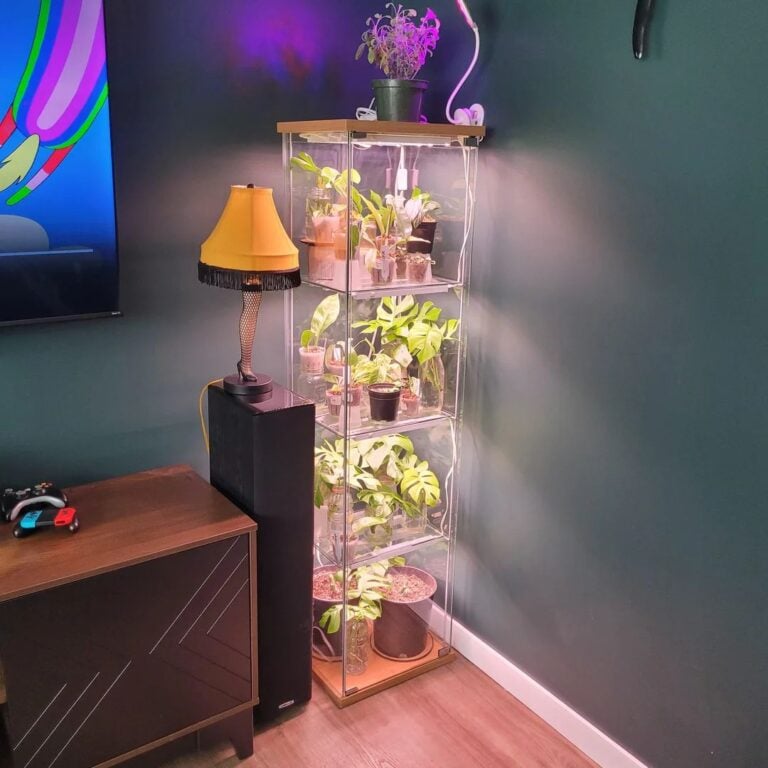

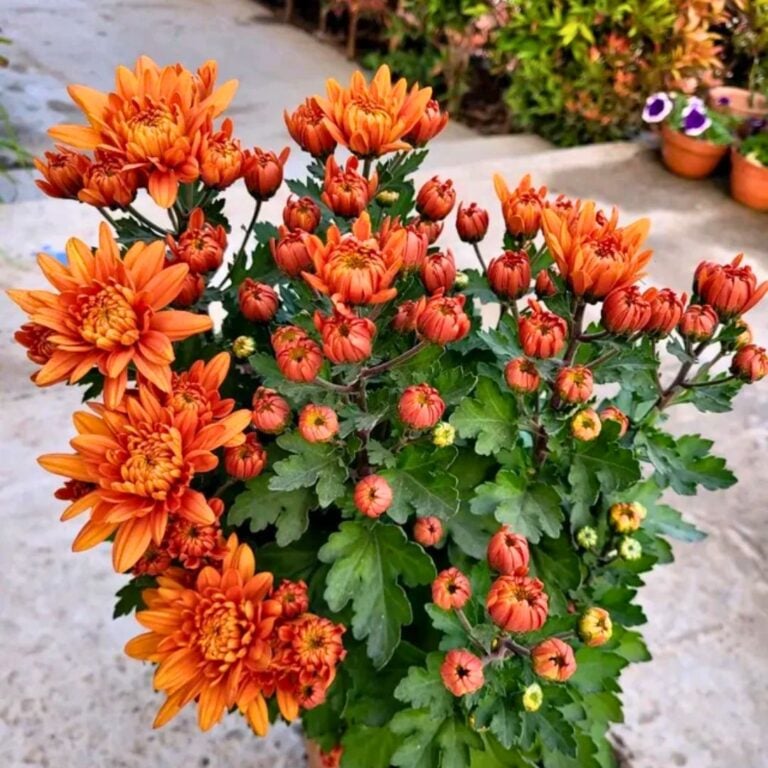


I LIKE YOUR WEBSIDE, GREAT ADVISES